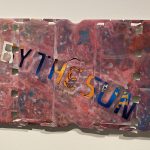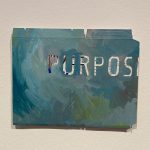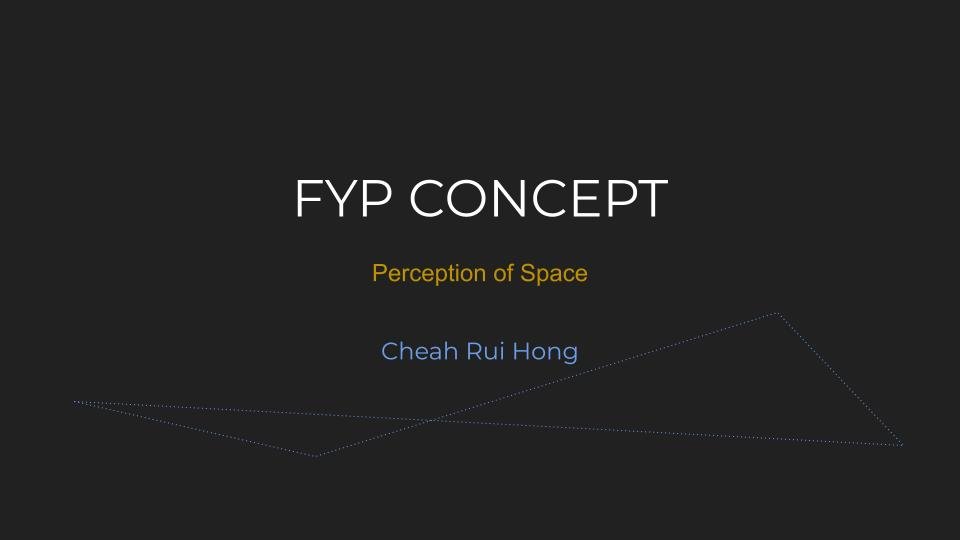FYP Pitch presentation can be found here: FYP Proposal
Category: Research
FYP Proposal Pitch Update: Week 11
Link to Week 11 Updates on FYP Proposal:
Reflection on Project Management Reading
Chapter 2 starts off with the steps to take in project management. What it seems to state as the obvious are the key details that we as junior designers often miss out. Though we always claim to have a grand scheme, a perfect plan, our projects sometimes do not come to fruition (to our expectations or others) due to poor planning. As designers, we are solo artists who are project managers at the same time. We often fail to acknowledge the importance of planning, I myself am guilty of this. We often have a projected aim; our concepts to manifest themselves as installations, posters that are able to express themselves. However, the effectiveness may vary depending on the degree of planning involved. Budget planning came as the most foreign, as I often do not consider how much I have to spend on a certain project, and often find myself spending too much. Even as junior designers, we do not have the excuse of not knowing certain things or skipping steps on project management. We owe it to ourselves to sought solutions and learn from our mistakes. As I progressed through the years of my studies at ADM, I find myself consulting others less. Am I more experienced and do not require other people’s help? No. One thing the reading has taught me is that complacency is also a point of failure, without the proper approach, I often find myself trapped and having risk the project going southwards.
Pragmatism isn’t my usual approach, but if I have learnt a thing or two, I have to grasp this quickly before I venture out as a full-fledged designer. Being pragmatic requires discipline, to sit myself down and go through sheets of paper and sketching my ideas until I am truly satisfied. That is the easy part, it is the planning that requires the most effort. I often see myself in roadblocks, staring at my work hours on end to think of a solution when all of this should have been foreseen. In chapter 5, William explains that poor planning led to 3 months worth of fixing mistakes that could have been prevented by the superintendent. ‘Not making a work plan is risky’ is reflected through his story on the superintendent’s inability to foresee the issue of the ramp, causing time consuming and budget expending mistakes. Being able to identify potential, drastic problems could prevent such complications from the get-go. Therefore, William explains that splitting design into bit-sized pieces is the best approach. By going from the big picture to adding the details, we can properly time manage and focus on the objectives instead of suffering from tunnel-vision. Goals and objectives are two very different outcomes. Goals are more intangible, result-oriented while objectives are tangible and planning-oriented. Identifying goals and objectives sorts the issue of planning, giving us space to divide our headspace so we can box out our ideas and allow it to grow in the correct direction.
FYP Proposal Ideas
Link to FYP Proposal Ideas: CRIT-FYP
Time Passes – A Reflection on Mengju Lin’s Series










Initial Thoughts
The work was presented about one arm’s length apart at eye level. At first glance, they resemble traditional fine art placement (of paintings mainly) but instead of one large piece, there were 10 different pieces spread across two walls. The fusion of acrylic painting and found material such as paper envelopes and cardboard gave the series a rather refined touch, contrasted by the off-centered text that dominated each of the paintings. I was really intrigued by the contrast, as it resembled a collage of sorts. Collages are well-thought albeit improvised (most of the time) pieces that reflect a person’s thoughts and personality. The text appears layered due to the cut – out pieces of magazines and tabloids.
Contemplations
Time Passes resonated with me in more ways than I could imagine. The exhibition showcased the transformation of everyday items, activities and spaces over the course of the pandemic. I’ve always wondered how things would change due to the pandemic. Will we ever be able to return to our ‘carefree’, mask-less and intimate ways of interaction that we have taken for granted? The answer is indeterminate. I enjoyed the series of artworks that encapsulated the concept of time and how time acts on the past and present. Re-expression of our beings, whether through subtle or drastic re-imagining of spaces and materials, continue to drape over the reality of our situation.
Of the many artworks present in the Time Passes exhibition, Mengju Lin’s series of 10 artworks invites us to look at the paintings with a new perspective. 10 coherent artworks, each having different names and texts (as listed above), are juxtaposed with varying effects and context. Personally, I feel that there is no need for complication; the artists leaves us to define the objects in whatever way we like. There is no fixed solution, estranged texts brought out of context intentionally, allowing us to form our own interpretations and adapt our minds to the objects. Simplicity worked well for the artist, who sought to blend familiarity and novelty. As we hope for time to heal us from the pandemic, care and compromise have been exercised, albeit in a much different way from before. In light of this, our compromise create subtleties and nuances in future practices and it would be inappropriate to say that we can return/resume our normal lives. The new normal, though undesirable to most, is likely here to stay in either shape or form.
Readings from CH 1 – Designing for the Digital Age by Kim Goodwin
Chapter 1 from Kim Goodwin’s Designing for the Digital Age is extremely resourceful and insightful. He starts off by introducing his own definition of Design – it is a craft of visualizing concrete solutions that serve human needs and goals within certain constraints. He goes on to iterate his stance on how Design should be differentiated from Art, as they serve different purposes. He describes Art as a form of expression of the artists’ inner vision, whereas design is more about a realization and the manifestation of the tangible. From this reading, the biggest takeaway/impression that was left on me was the implication that great designers are thinkers. Thinkers that go beyond the simplicity of creating a product and exploring the outcome. In doing so, these successful designers are able to incorporate foresight into their composition and work backwards in finding the optimal solution for their clients.
Design is a craft because it is neither science nor art, but somewhere in between.
Design uses science that disguises itself as art to entice and produce outcomes that serve human needs and goals. I agree with his point on this – we cannot escape the fact that science is all around us and we inevitably borrow concepts from it to create projects. Sometimes, people may confuse the outcome of aesthetic satisfaction and pleasure as a art. Artists are bound by their ideation and their goal to achieve a certain impression on its viewers – be it abstract art or not.
Design always happens within certain constraints.
This is very apt as design always has an intended outcome – Goodwin states that pleasure and aesthetic satisfaction are also important human goals, the fact that design is tailor in a certain way restricts designers from exploring too wide and applying too many concepts into an approach. This will lead to the project going haywire, particularly due to it not being focused and engaging in too much experimentation – going beyond the budget of the project. Such is the matter of fact – we have limited resources in building designs, often we have to differentiate ourselves from architects and remove ourselves from the idea of building products. Instead, we build opportunities for our clients to close the gap in creating solutions.
Goal-Directed Design
I interpreted goal-directed design as working backwards, always keeping the end-goal in mind and moulding the design to fit the goals. As modern day designers, we tend to receive feedback only towards the end of our creative journey of a project. For Cooper, however, it was about the consistency of having a third-party perspective. To integrate this, they had created convincing personas that would lead them in the right direction and keep the designers in check. As designers, we tend to delve too deep into our works, lose our sense of direction and follow the lead of our intuition. By bringing in personas, they act as consumers/customers who are able to give unbiased opinions that are constructive. This elevates the design and helps it remain inclusive and versatile. Aligning our thought processes and rationale with the clients, it was create the opportunity for a successful product.
Concluding thoughts
As I would like to think, no two designs are the same. The end-product may appear similar, but the thought process, the methods in reaching the end-goals would be vastly different. Especially from the concept point-of-view, it is impossible to recreate two same projects through two separate entities. Though this reading takes on a more corporate view, the fundamental principles of design remains and a framework is drafted as an open source sharing, equipping us with indispensable knowledge in our future as designers.
SAW Assignment
Link to slides can be found here:
Thoughts on A critique of social practice art
Social practice art is not entirely unchartered territory. I would say however that it is a term coined in recent years, finally being placed into categorization, and that in itself is theorized. It serves to have tangible outcomes for political/social shortcomings whilst maintaining its definition as art. This shifts away from simple critiquing of contemporary culture and transforms itself to then become more real-time, an art that is ever-evolving and is not bound to certain exhibitions, galleries or museums. In contrast, it isn’t to say that social practice art cannot be done in such places, but that its reality lies within the community and the social issues that they tackle.
The shift and burgeoning faction of social practice arts goes against the esoteric stereotype that art conformed to. In the past, art was commissioned by and for the wealthy. This practice was criticized by Banksy, who made an implicit statement by shredding ‘Girl with Balloon’ to become ‘Love is in the bin’. He did not resonate with the idea of placing monetary value on art and making art profitable, which motivated him to shred the work. The work ironically become more valuable after its attempted destruction. Social practice art is then the polar opposite, where its aim is to not only critique, but provide viable solutions to existing issues. How then is social practice art different from activism? Sometimes, “social practice” can seem like little more than aestheticized spin on typical non-profit work. In my opinion, the art form comes from the intent and the nature of the social practice, not just because it was done by an artist, but due to the fact that it serves a beautiful purpose that becomes the art. Having a twist on typical non-profit work and threading the fine line between overtly politicized work and charity.


